"Electronic" diary
• Qualitative analysis of Holter recordings is impossible without a detailed diary of the patient, but often it is filled out sparingly, and the nurse at the end of monitoring does not supplement it either. This problem is especially significant in remote transcription of records, when the doctor is forced to draw conclusions without knowing about the presence of sensations, loads, taking medications ... In the new series of monitors "Cardiotekhnika-07" using a touch screen organized entry of complaints and actions of the patient during the observation. Simple, intuitive interface is easy to use even for elderly people.
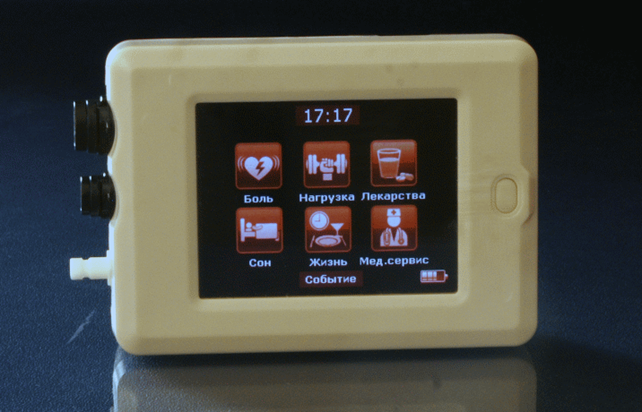
• The information entered is presented to the physician along with the monitor data, allowing the objective information to be compared with the patient's vital signs so that nothing important is missed.

When analyzing the recording from the "Cardiotechnika-07" monitor, the computer already automatically records periods of sleep and exertion, unpleasant sensations and emotions, food and medication intake... (marked in different colors). The doctor can compare them with objective information (arrhythmias, apnea, episodes of hypotension, periods of myocardial ischemia...). Moreover, the computer automatically determines the possible connection of the pathology with the patient's life activity periods, its reliability, and presents it to the doctor.
Telemonitoring
• A fundamentally new surveillance technology that combines long-term Holter monitoring and telemetric monitoring ("telemonitoring"). The patient wears an ultra-miniature monitor that continuously records ECG.
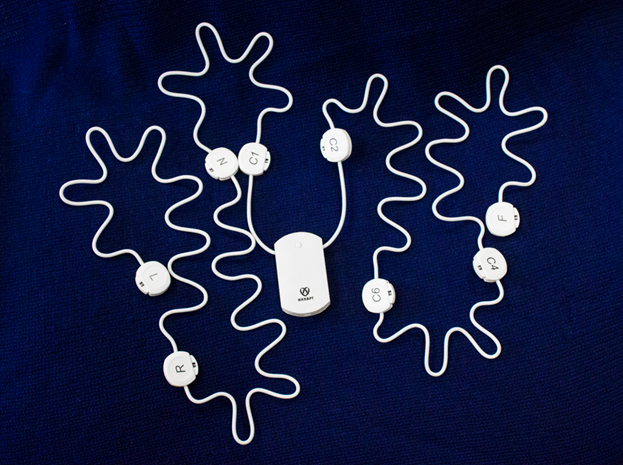
If necessary (at the set time or when symptoms appear), the monitor connects to the phone and transmits the accumulated information to the doctor, who determines further tactics (change of treatment, continuation of monitoring, hospitalization...). During communication with the phone, the monitor is charged and ready to continue monitoring. In this way, monitoring of "infinite" duration can be carried out. The technique has shown great value both for the detection of rare pathologies and for the selection of antiarrhythmic or antianginal therapy.
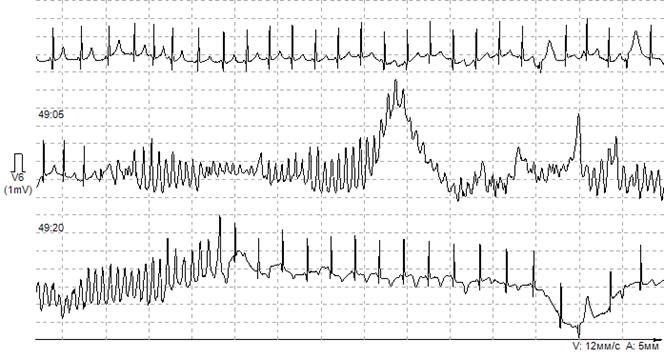
Polyfunctional Monitoring
• The line of monitors "Cardiotechnika-07" is supplemented with a unique multifunctional monitor. This device records a full set of respiratory characteristics, corresponding to the American standard for verification of obstructive sleep apnea syndrome, as well as records 12 ECG leads and measures BP by two methods (Korotkov and oscillometric). It is necessary when a patient needs a comprehensive study, allowing not to conduct separate ECG and BP monitoring and respiratory monitoring, and get all the information in one day. Given that there are many patients with arrhythmias or CHD combined with arterial hypertension and obstructive sleep apnea syndrome, the use of such a multifunctional monitor will provide significant savings in time and money. In addition, it offers a unique function of assessing the association of hypertension with apnea episodes - objectifying this frequent variant of symptomatic hypertension. The device is also popular with private physicians and small centers, as it allows three types of examinations with one device.
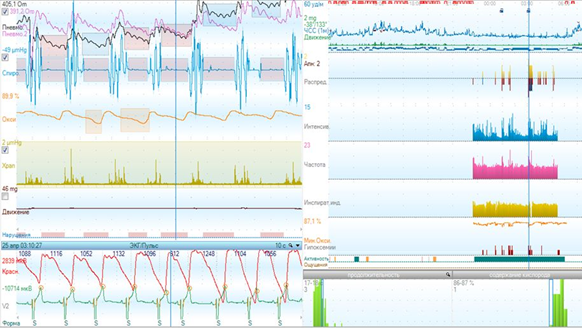
The multifunctional monitor "Cardiotekhnika-07-AD-3\12P" registers a representative set of respiratory parameters (from top to bottom) - chest movements (preammogram) in thoracic and abdominal sections, oro-nasal airflow (spirogram), blood oxygenation level and pulse, snoring, patient's movements and body position, rhythmogram, synchronously with 12 ECG leads and BP measurement by two methods (Korokovsky and oscillometric). Based on these parameters, it is possible not only to verify the presence of respiratory arrests (apnea) and determine their genesis and severity, but also to identify their relationship with arrhythmias and arterial hypertension.
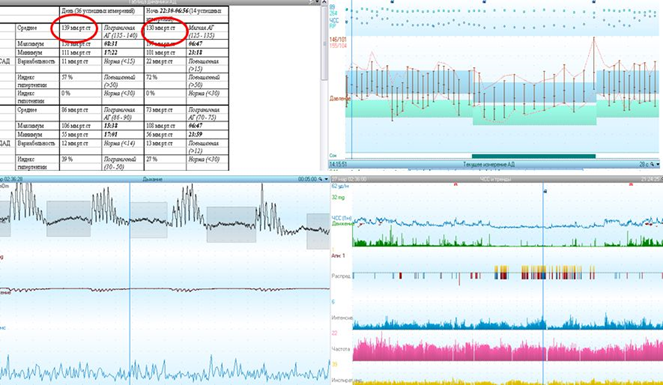
Combined spirogram and snoring channel
• Minimizes the number of sensors placed on the patient while maintaining high signal quality. The simplicity of installing one (rather than several) sensors allows them to be installed overnight by the patient. The set of physiological signals recorded by these monitors complies with the American Recommendations (**, 2008) and includes, in addition to spirogram and snoring, two channels of pneumogram (chest and abdominal breathing), blood oxygenation level, movement, patient's body position, ECG (as well as rhythmogram), peripheral pulse. This set is considered sufficient to verify the presence of apnea, differential diagnosis of apnea of central and obstructive genesis, assessment of the severity of the disease.
High quality accessories
• A special electrode holder cable with a secure attachment to disposable electrodes eliminates the "snap-off" that is not uncommon with standard "buttons". The proprietary double-shielded wire not only reduces external noise, but also minimizes interference from clothing (synthetics, wool). The microprocessor built into the holder monitors the cable operation, counts the number of its placements and operating time.
• Special patented cuff design. Conventional Velcro cuffs are difficult to tighten securely on the patient's arm and often slip and result in faulty measurements. Staple cuffs are easy to tighten, but often result in bruising of the patient's arm. INCART offers a special cuff design that allows the cuff to be held tightly in place on the arm for the entire day.
• Highly sensitive microphone. The special differential microphone of a special design used in daily BP monitors "Cardiotekhnika-07" separates Korotkoff tones from noise much better than known analogs. With its use such phenomena interfering with the correct BP measurement as "endless Korotkoff tone", "blood beats on the cuff at a pressure higher than the systolic pressure"... The high sensitivity of the microphone allows you to install it not on the skin above the brachial artery, but in the cuff pocket, which is not only more comfortable, but also eliminates cases when the cuff slipped below the microphone.
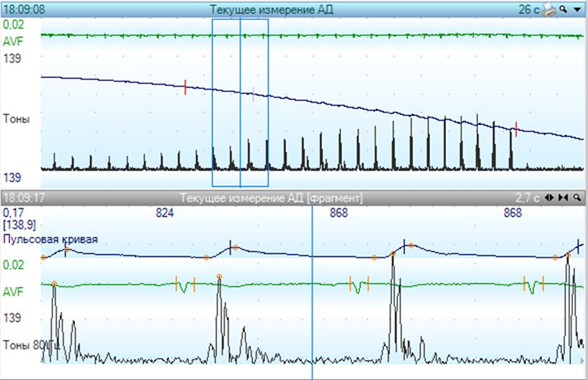
Закрыть
Купить в один клик






